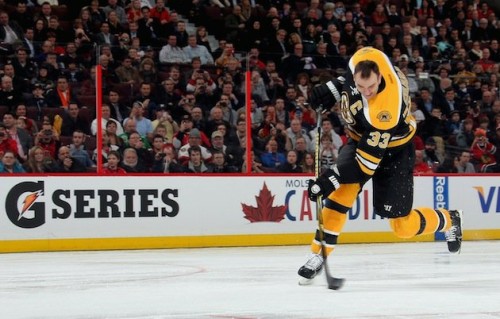Hockey School – Quantum Mechanics

As a hockey fan and an academic, you, dear reader, may be surprised at how many things can be explained by using hockey as a metaphor. While we eagerly await the beginning of the NHL regular season, allow me to entertain and educate you, as well as taking up some of your precious waiting time.
Every week, beginning today, will mark the beginning of me using hockey to explain complex ideas and theories in the world. Today’s example: Heisenberg’s Uncertainty Principle.
While you may be aware of Heisenberg as Walter White’s alias during his tenure as meth cook extraordinaire in Breaking Bad, his alias, being a scientist, is very clever. Just some background information, Werner Heisenberg (the not-fictional one) was a German Theoretical Physicist, recipient of the Nobel Prize in 1932 for being one of the fathers of quantum mechanics. In short, he was a smart cookie.
Up to the time Heisenberg conducted his experiments, particle physics assumed the atom looked like hockey players warming up before a game, assuming the net is the nucleus. It’s the image you associate with a particle, and one of the defining stock images of science, aside from a flask. You see, science imagined that electrons – negatively charged particles – revolved around the nucleus in different orbits, much like hockey players circle the net prior to a game in different paths.
When Heisenberg came around, there were many different other scientists doing work that showed that an electron behaved as both a particle, and a wave. In hockey terms, think of Zdeno Chara with a puck, both a puck carrier, and a very large wall of man barreling down at you at the same time.
Other scientists debunked the theory that electrons move around in orbits around the nucleus, but rather, that there are particular places where they are more likely to be, known as “electron clouds,” much like Zdeno Chara is likely to be found defending, but could also be found screening the opposing goalie, or moving ahead as a winger.
Now, let’s think of Zdeno Chara at the point on a powerplay. In this scenario, the big Z is the nucleus, while the puck is an electron. Chara winds up, and shoots the puck. According to classic physics, you can see the puck and the radar at the same time, knowing exactly where the puck is, and how staggeringly fast it is going, as the puck/electron is a particle, able to be measured; however, quantum mechanics says otherwise. As many goalies may attest to, once the puck makes contact with Chara’s stick, it becomes barely a blur. You can know how fast is going, but for a second, you don’t know exactly where the puck is, almost as if the puck becomes a wave. Imagine now that someone takes a picture of the shot as it makes its way to the net (and that they have a pretty good camera with image stabilization, and what not). The puck will look as if it was suspended in mid-air, meaning that there is no way to tell how fast the puck is going.
Heisenberg posited that it is impossible to accurately measure both the position and momentum of an electron without sacrificing either one. Much like in slow-motion, Chara’s shot can be seen as it travels, but its velocity cannot be accurately perceived. It is because of this uncertainty principle that Bryan Cranston’s tour-de-force in Breaking Bad was given the alias of Heisenberg.
The more you know…

